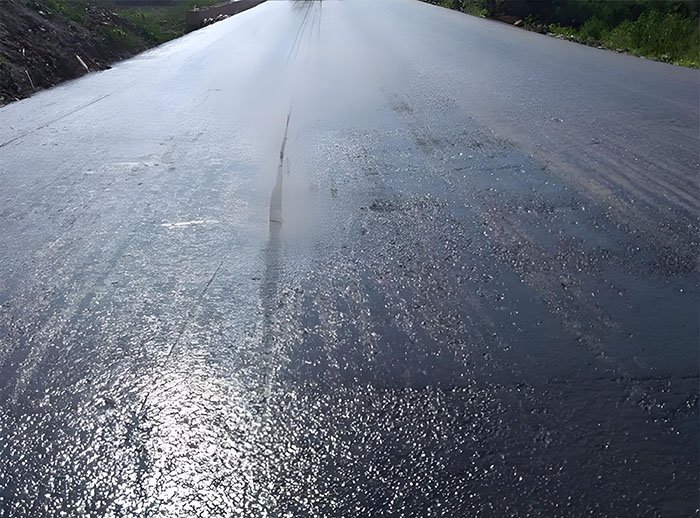Adhesive layer emulsified asphalt is a key material used for bonding between structural layers of asphalt pavement (such as lower layer and middle layer, middle layer and upper layer) or between asphalt layer and other structures (such as bridge deck, curbstone). Its characteristics and functions are as follows:
1、 Main characteristics
1. High adhesion
Using fast cracking or medium cracking emulsified asphalt (such as PCR type), a strong adhesive film is formed after demulsification to ensure tight interlayer adhesion.
2. Rapid demulsification
Quick cracking emulsified asphalt can break and solidify in a short period of time (usually 1-2 hours), shortening the construction interval.
3. Uniformity of thin layers
After spraying, a uniform thin film (with a thickness of about 0.2-0.5mm) is formed to avoid local bonding failure.
4. High temperature resistance and shear resistance
It can maintain bond strength and resist interlayer slip under high temperature and driving load.
5. Environmental Protection and Economy
Construction at room temperature, no heating required, reducing energy consumption and pollution.
2、 Main function
1. Interlayer bonding core
Prevent slippage and delamination (such as peeling off of the upper layer) between asphalt layers due to horizontal forces or temperature differences.
2. Seal subtle cracks
Fill the micro cracks on the surface of the lower layer to reduce the risk of water infiltration and reflection cracks.
3. Enhance overall integrity
Make the multi-layer asphalt structure form a continuous load-bearing body, improve the road's resistance to rutting and fatigue.
4. Adapt to dynamic loads
By using flexible bonding to cushion vehicle impacts and reduce interlayer stress concentration.
3、 Typical application scenarios
1. Inter layer bonding during layered paving of asphalt surface layer (such as between the lower layer of AC-16 and the upper layer of AC-13).
2. Interface treatment before adding a new surface layer to the old asphalt pavement.
3. The bonding transition between cement concrete bridge deck and asphalt pavement layer.
4. Bonding the contact surface with structures such as curbstones and inspection wells.
4、 Key points of construction
1. Clean the surface: Thoroughly remove the underlying floating dust and debris to ensure dryness.
2. Precise spraying: Using a dedicated sprinkler truck to avoid leakage or excessive spraying (excessive spraying can cause oil spillage).
3. Temperature control: The construction environment temperature should be ≥ 10 ℃, and work is prohibited on rainy days.
4. Timely paving: Immediately pave the upper layer of asphalt after demulsification to avoid pollution or damage to the bonding layer.
Adhesive emulsified asphalt is the guarantee for the "interlayer collaborative work" of asphalt pavement, which directly affects the anti-skid and durability of the pavement.


